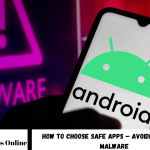The educational landscape of 2025 presents both unprecedented opportunities and significant challenges for students and teachers navigating an increasingly digital world. As technology becomes more deeply integrated into educational practices, ensuring equitable access and outcomes has emerged as one of the most pressing concerns facing educational institutions worldwide.
The digital divide—the gap between those who have ready access to computers and the internet and those who do not—continues to impact educational opportunities in profound ways. For many students, particularly those from lower socioeconomic backgrounds, rural areas, or developing regions, limited access to technology creates barriers to participating fully in modern educational experiences. Meanwhile, teachers face the challenge of designing inclusive learning environments that accommodate diverse levels of technological access and literacy.
Recent studies indicate that despite significant progress in expanding internet connectivity globally, substantial disparities persist. These disparities were starkly highlighted during the pandemic when remote learning became necessary, revealing that many students lacked the basic technological infrastructure needed to participate in online education. As we move forward, addressing these inequities has become a central focus for educational policymakers and practitioners alike.
Hybrid and flexible learning models have emerged as one approach to mitigating these challenges. By offering multiple pathways to access educational content—including both online and offline options—institutions can accommodate students with varying levels of technological resources. These models recognize that flexibility is not merely a convenience but a necessity for ensuring that all students can engage meaningfully with educational opportunities.
Educational technology companies are increasingly developing solutions designed specifically to address equity concerns. Offline-capable applications, low-bandwidth options, and mobile-first approaches acknowledge the varied technological contexts in which learning takes place. These innovations represent important steps toward creating more inclusive digital learning environments.
For teachers working in diverse settings, professional development focused on digital equity has become essential. Understanding how to leverage available technologies while remaining sensitive to the constraints facing students requires both technical knowledge and cultural competence. The most effective educators are those who can adapt their teaching strategies to meet students where they are, technologically speaking.
Beyond access to devices and connectivity, digital literacy represents another dimension of the equity challenge. Students who have grown up with limited exposure to technology may lack the foundational skills needed to navigate digital learning environments effectively. Progressive educational programs now incorporate explicit instruction in digital literacy, recognizing that these skills are as fundamental to modern education as reading and writing.
Artificial intelligence and adaptive learning technologies hold particular promise for addressing equity concerns. By personalizing educational experiences based on individual needs and learning patterns, these technologies can help bridge achievement gaps and ensure that all students receive appropriately challenging material. However, realizing this potential requires careful implementation to avoid reinforcing existing biases or creating new forms of inequality.
Community-based solutions have also proven effective in addressing the digital divide. Programs that provide shared access to technology resources—such as community tech centers, mobile computer labs, and device lending libraries—extend digital learning opportunities beyond school walls. These initiatives recognize that meaningful access often requires more than just providing devices; it requires creating supportive environments where students can develop technological skills with appropriate guidance.
The rise of open educational resources (OER) represents another important trend in promoting educational equity. By making high-quality learning materials freely available, OER initiatives reduce cost barriers and ensure that all students can access essential educational content. For teachers, these resources provide flexible materials that can be adapted to meet the specific needs of their students.
Looking beyond traditional educational settings, innovative programs are leveraging technology to reach underserved populations. Mobile learning initiatives bring educational opportunities to remote regions, while microlearning approaches make education more accessible to those with limited time or irregular schedules. These approaches recognize that conventional educational models may not serve all learners effectively and that technological innovation can help extend educational reach.
Data analytics is increasingly being employed to identify and address equity gaps in real-time. By tracking patterns of engagement and achievement across different demographic groups, educators can pinpoint where interventions are needed and evaluate the effectiveness of equity-focused initiatives. This evidence-based approach ensures that resources are directed where they can have the greatest impact.
International cooperation has become essential in addressing global educational inequities. Collaborative initiatives that share best practices, pool resources, and develop shared technology standards help ensure that educational opportunities are not determined by geography or economic status. These efforts recognize that in an interconnected world, educational equity is a shared responsibility that crosses national boundaries.
As we navigate these challenges, maintaining a focus on the human dimensions of education remains crucial. Technology is a powerful tool for expanding educational opportunities, but its effectiveness ultimately depends on how it is employed by caring, committed educators who understand the unique needs and potential of each student. The goal is not merely to provide access to technology but to use technology as a means of creating more humane, responsive, and equitable educational experiences.
The path toward digital equity in education is neither simple nor straightforward, but the potential rewards—a world where all students have the opportunity to develop their talents and pursue their aspirations regardless of background or circumstance—make it a journey worth undertaking. By working together, students, teachers, policymakers, and technology developers can create an educational future that is both innovative and inclusive.


